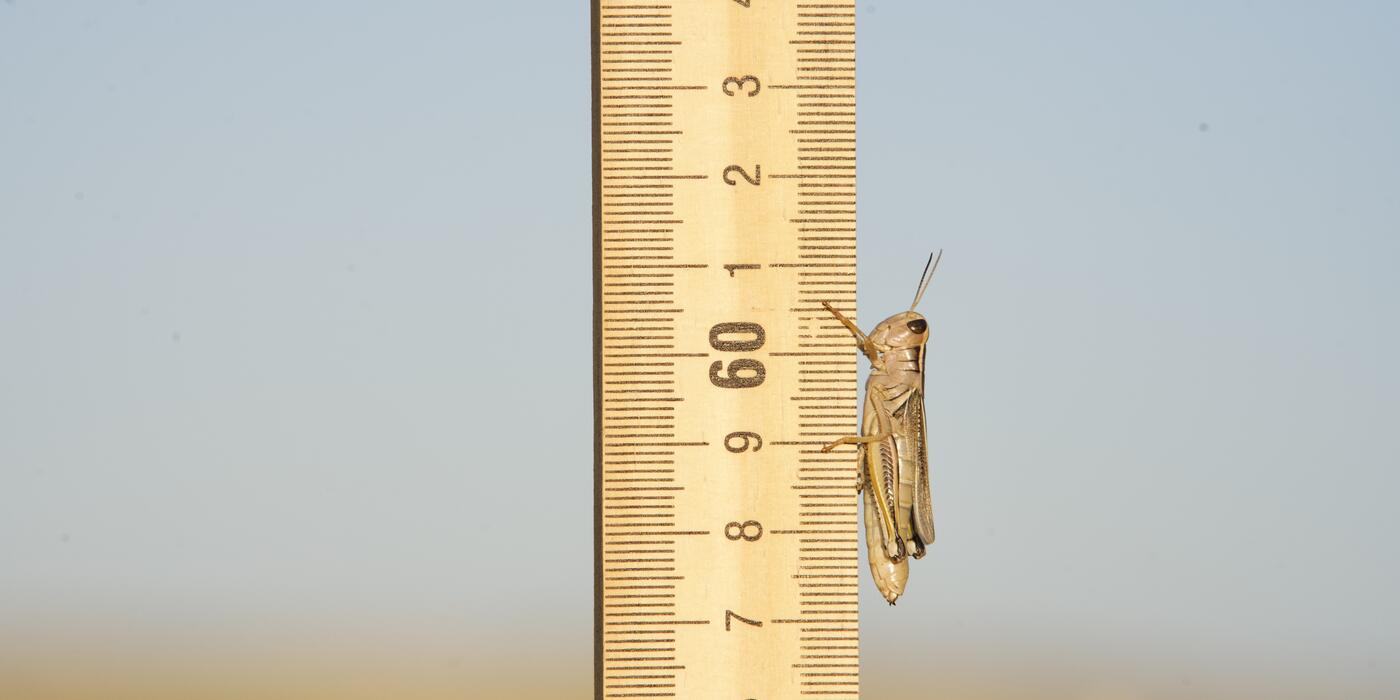The Triumphs and Challenges of Raising One of the World's Rarest Birds
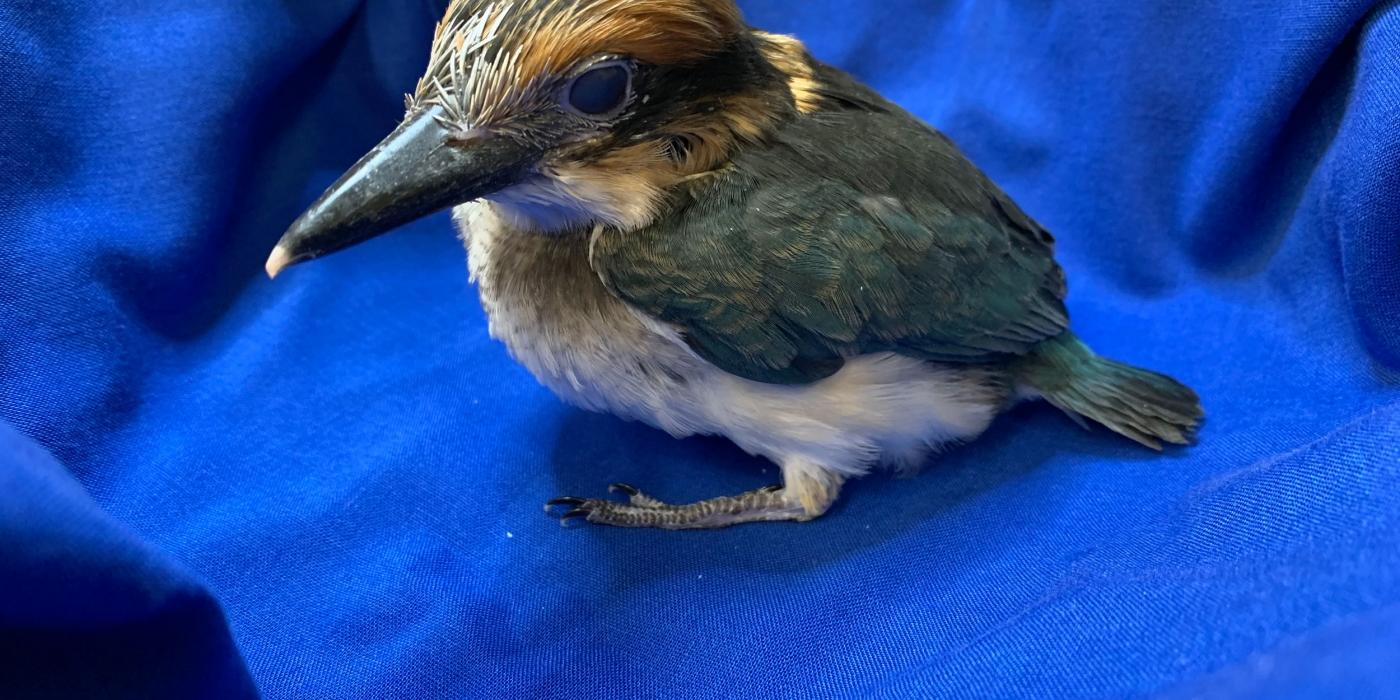
Guam kingfishers, or “sihek” as they are known as in Guam, are incredibly rare and difficult to breed. With fewer than 140 left in the world, each bird could be the difference between the survival or extinction of the species. So, we are thrilled to be closing out the breeding season with four Guam kingfisher chicks, making this our biggest year to date — and one of our busiest!
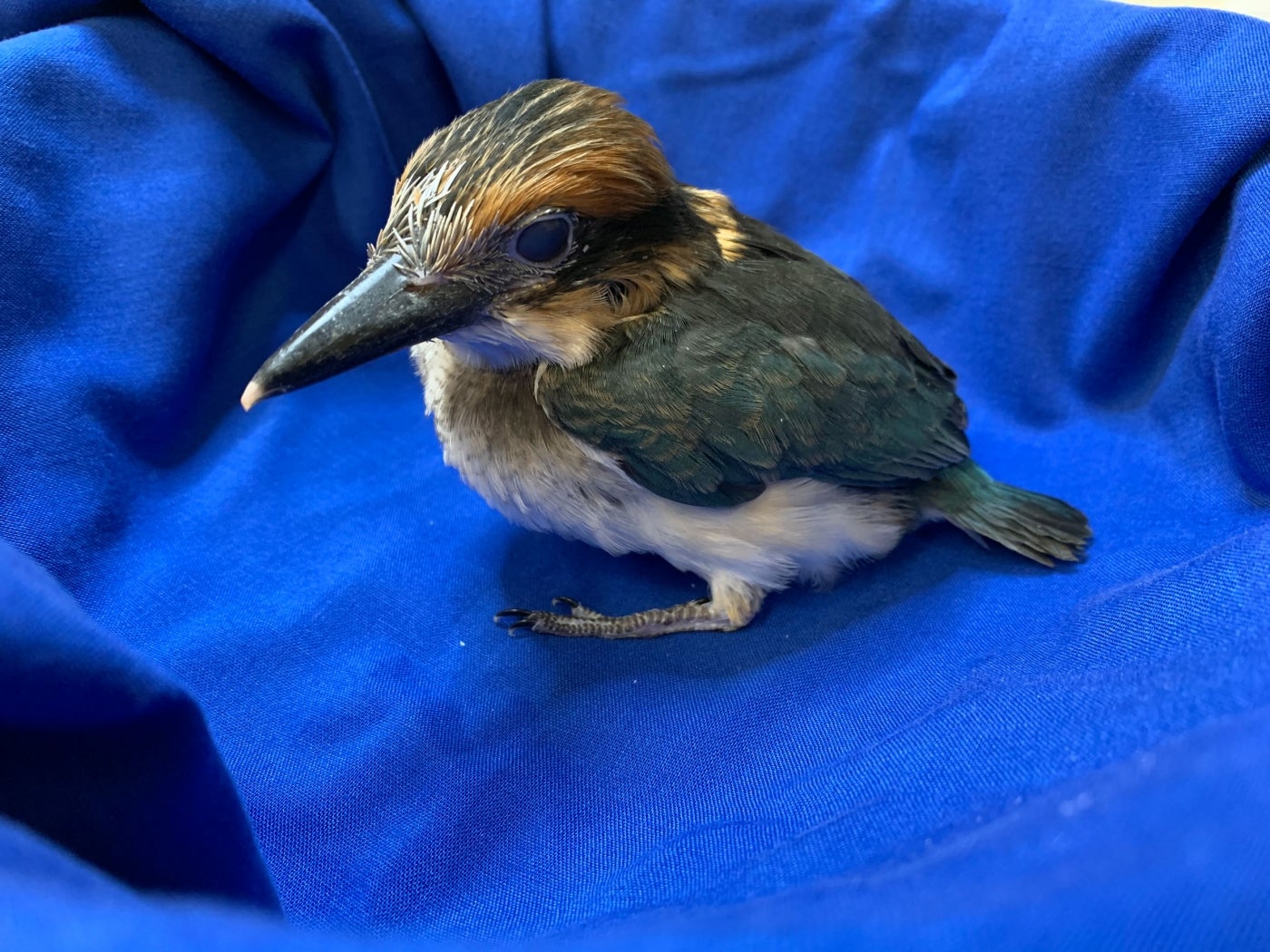
First-time parents and nests need extra observation, and our little but hungriest new additions require extra (and sometimes hands-on) feedings. Veterinary check-ups also happen frequently to make sure all our baby birds are healthy.
In my last update, Guam kingfisher Giha (gee-ha) had just started a new nest. It came as no surprise that Giha was very attentive to her two eggs, as she had been with her first clutch this year. On day four of incubation, we could see that both eggs contained tiny embryos with visible heartbeats! To see an embryo, we shine a bright light on the egg for just a few seconds. This is called “candling.” We can only see an embryo’s heartbeat when it is very young, just after the heart is formed. As more tissue develops over the following days, the heartbeat will no longer be visible. Later in incubation, we can use candling to see if the embryo is moving and developing strong blood vessels.
Guam kingfisher parents rarely have success raising two chicks at the same time, so we moved one egg to a surrogate mother, Kahåya (ka-ha-ja). You may remember Kahåya from my previous updates. Though she has not successfully bred with her mate, Fuetsa (fu-et-sah), we have seen her diligently incubating infertile and “dummy” eggs (eggshells filled with plaster). She cared for her dummy eggs so well that we decided to give her a chance to rear one of Giha’s chicks — though Kahåya would think that the chick was her own. We gave her the egg to incubate on June 4. When we checked the egg a few days later, the hatching process was well underway.
We knew the chick would be out soon. From our camouflaged observation tents, we watched Kahåya closely. In the afternoon, she left the nest to eat. We checked the nest and saw the chick pushing itself out of the egg! Kahåya returned about 15 minutes later, poked her head out of the nest cavity with the chick in her mouth, and dropped it. We don’t know why Kahåya decided to drop the chick, but it’s not uncommon for Guam kingfishers to exhibit poor parenting. It’s what makes them one of our more difficult species to breed.
Luckily, the chick fell into an “egg-catcher” that we had set up for Kahåya last month after she laid an egg while sitting on a branch. We quickly retrieved the chick, so our veterinary team could examine it. We also collected its eggshell. The inner membrane of an eggshell contains many blood vessels, which we can test in a lab to determine the sex of a chick. The eggshell test told us this chick was a female. Thankfully, she received a clean bill of health, apart from a bit of bruising. Over the next several days, we fed her and monitored her progress.
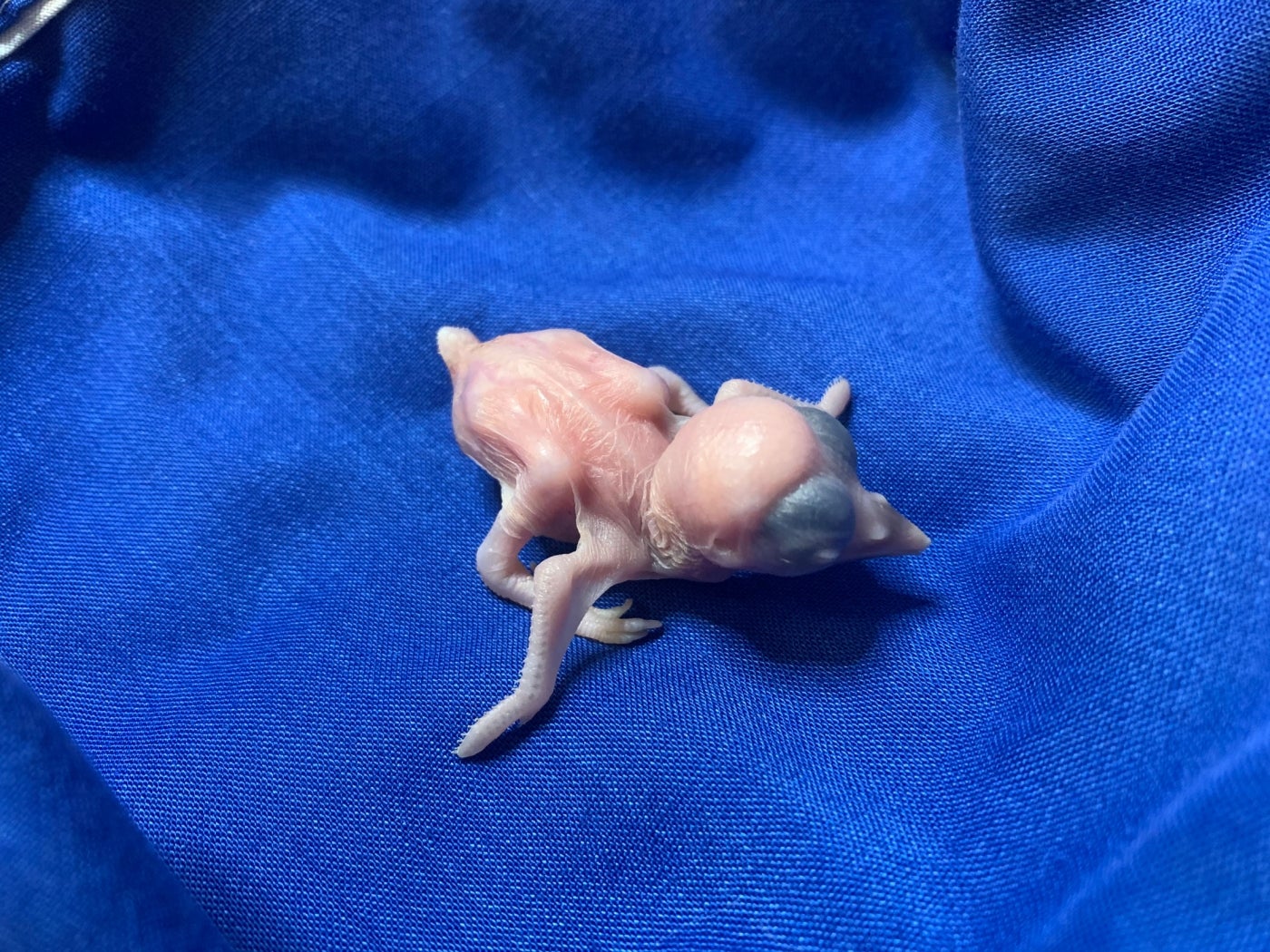
Veterinarians gave the female chick a clean bill of health. We fed her and carefully monitored her progress over the next few days. Here she is at 3 days old.
Back in Giha’s nest, the egg she was incubating hatched as well. Eggshell samples revealed that this chick was a male. We offered small bits of food to him for about a week, using bamboo skewers to reach inside the deep nest cavity. We also decided to try something new: swapping the male and female chicks every few days between the nest and our incubator. This chick-swapping technique has been used successfully by other facilities. It allows both chicks to have some experience with their parents, while also making sure that we can easily check on their weight and overall health.
Every three to four days, we weighed the chick in the incubator, fed it a nice big breakfast and then switched it with its sibling who had been living in the nest cavity! We used a long-handled teaspoon or an ice cream scoop to get the babies out of the nest. When the chicks were about 2 weeks old and a bit too large to swap, we left the male with his parents and finished raising the female in our incubator room. This method seems to have worked well, as both birds are still very wary of people. These chicks could be reintroduced to the wild one day, so it’s important that they are not too familiar with humans.
The siblings both fledged — left the nest (and incubator) to become independent — at 32 days old. While the female’s fledge day was uneventful, the male’s was quite the learning experience. Kingfisher parents Giha and Animu (ah-knee-moo) had exhibited excellent behavior during their time with the chicks. However, Animu grew aggressive once his male chick fledged (despite bringing the chick food just a few hours earlier in the nest). We removed the chick immediately but found that he had a fractured maxilla, which is the top half of a bird’s beak.
Our veterinary team applied a small amount of tissue glue to the area keep his beak stable. They felt that in time it would heal, but we would need to figure out how to feed him without further injuring his beak. He had not learned how to feed himself yet, a process that usually takes at least a week for a young kingfisher living with its parents. We moved him to a quiet and carefully padded incubator, where we managed to offer this feisty male food without having to touch his bill.
We worked in teams. One keeper would hold him, while the other touched small bits of food to the side of his bill. When he opened his bill to eat, we would toss the food into the back of his mouth where he could swallow it. This way, he didn’t need to bite down and put any unnecessary pressure on his bill. After about 10 days, he finally ate his first cricket all on his own! He’s doing fantastic now and eating crickets, mealworms, little lizards and small rodents all by himself.
The male chick’s beak is healing well, and he has no problems eating on his own now.
Once he showed signs of independence and didn’t need to be handled so often for feedings, we knew he was ready to move into an adult enclosure where he could practice his flight skills. He and his sister (who don’t have names yet) now live side by side and can often be heard “talking” to each other through their adjoining doorway. For now, we have no plans to house them together. We want to give the male time for his beak to fully heal. But the two are already just as curious and ornery as their older siblings, Lina’la’ and Gekpu.
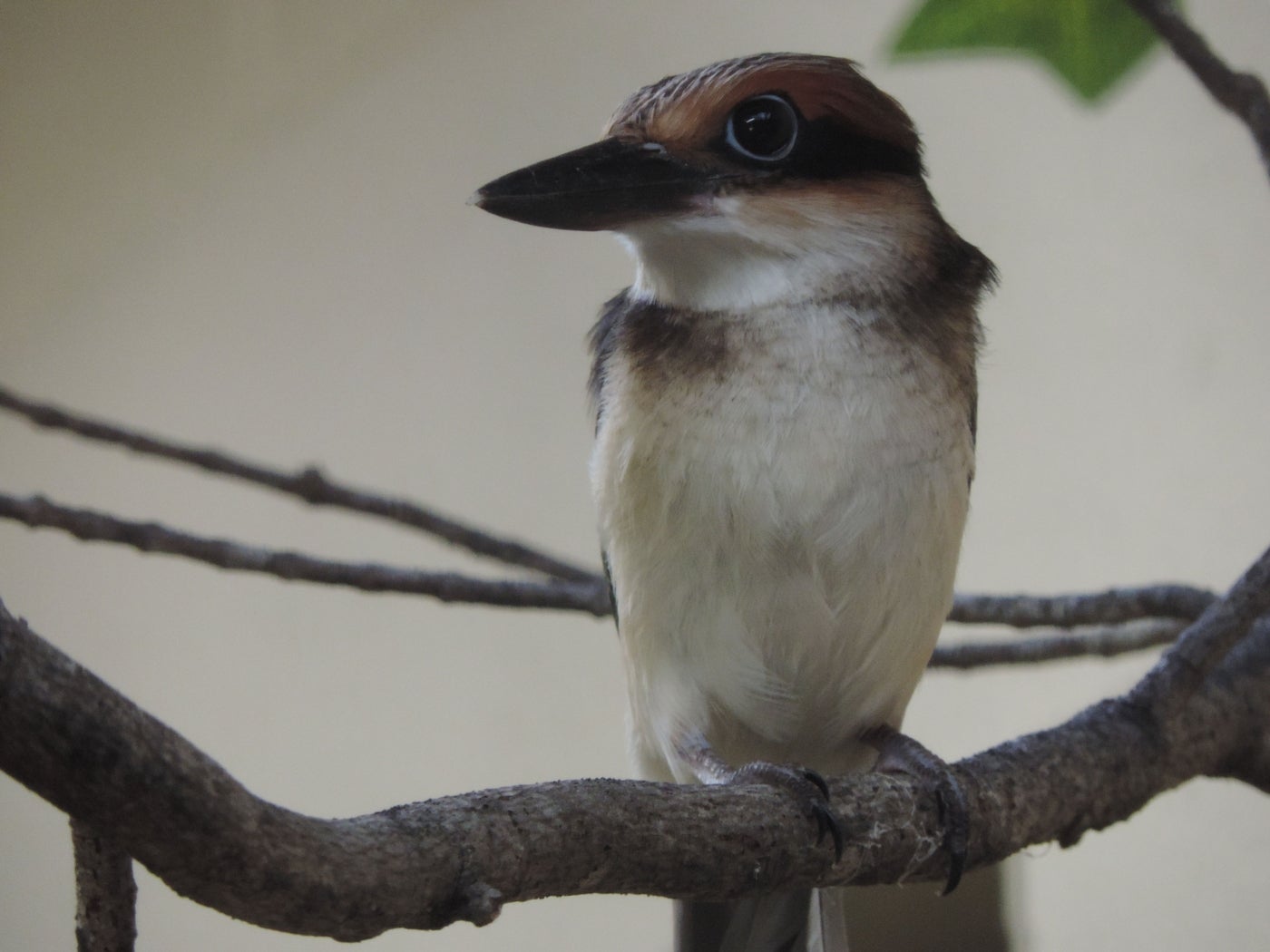
We don’t know what the future has in store for these siblings yet. Guam kingfishers are part of a Species Survival Plan, or SSP, which means they are all managed as a single population under the Association of Zoos and Aquariums. An SSP coordinator recommends which birds should breed to keep the population healthy and genetically diverse. That means these chicks could leave the Smithsonian Conservation Biology Institute and go on to become parents at another facility, or they could have new mates sent here. Someday, their offspring could even be reintroduced to the wild.
Our Guam kingfishers found plenty of ways to surprise us this year. They also gave us many reasons to celebrate. Ultimately, we welcomed four new chicks — the most since our Guam kingfisher program began in 1984. The next few months will be a time to relax and recoup, for us and the kingfishers. Breeding season kicks off again in January, so we can’t wait to see what our birds have in store for us next!
Related Species:
